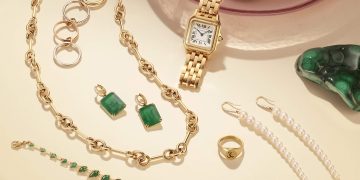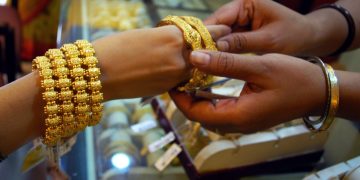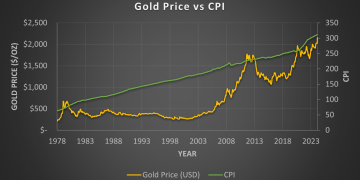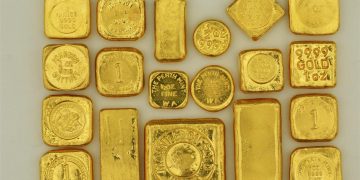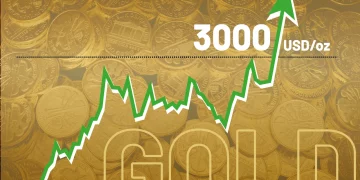Year-on-Year Comparison: Wearable Gold vs. Stored Gold
Gold has been a staple of wealth preservation and a store of value for centuries. Traditionally, investors have favored gold bullion—bars and coins—as a straightforward way to secure wealth. However, a more recent trend is emerging where gold jewelry, long perceived as a luxury item, is being considered a valuable investment asset. Over the past decade, the global gold jewelry market has seen significant growth, and its performance is beginning to rival, and in some cases surpass, the returns of gold bullion.
The fundamental question that arises is: Why is the gold jewelry market outpacing bullion in some regions? To understand this, we must first delve into the various factors influencing both markets.
Factors Driving Jewelry’s Outperformance
The gold bullion market is driven primarily by the price of gold, which is influenced by macroeconomic factors such as inflation, interest rates, and geopolitical uncertainty. Bullion is typically bought as a hedge against market volatility or as a long-term investment. In contrast, gold jewelry’s performance is determined not just by the market price of gold but by a combination of factors such as design, craftsmanship, scarcity, and branding.
- Design and Craftsmanship: Unlike bullion, which is purely a commodity, gold jewelry holds intrinsic artistic and cultural value. The quality of design, the skill of craftsmanship, and the rarity of the piece all contribute to the jewelry’s value. Unique, one-of-a-kind pieces or those made by renowned designers can appreciate significantly in value. Over the past few years, there has been a noticeable shift toward high-end designer jewelry that not only contains gold but also features intricate craftsmanship and rare stones. This increase in the cultural and aesthetic appeal of jewelry makes it more attractive as an investment.
- Scarcity: While gold itself is a finite resource, the amount of gold in circulation as jewelry is also limited. Pieces from well-known brands or those with exceptional craftsmanship become rare commodities that hold or increase their value. As fashion trends evolve, certain designs or collections can become highly sought-after, driving their prices higher, irrespective of fluctuations in the gold market.
- Collector Demand: The demand for gold jewelry is not only driven by its intrinsic value as a precious metal but also by its desirability as a collector’s item. Jewelry enthusiasts and collectors look for pieces that are unique, have historical significance, or come from renowned makers. This dynamic adds a layer of demand to the gold jewelry market that is not present in the bullion market. Over time, certain pieces of jewelry can become valuable in the same way art or rare antiques do.
Role of Fashion, Scarcity, and Collector Demand
Gold jewelry has always had a place in the world of fashion. However, the intersection of fashion and investment is increasingly evident. High-end brands, such as Cartier, Van Cleef & Arpels, and Tiffany & Co., produce iconic gold jewelry pieces that become investments due to their design and brand recognition. The combination of aesthetics and intrinsic value allows these pieces to appreciate in ways that standard bullion does not.
Scarcity plays a significant role in driving prices for gold jewelry. Unlike gold bullion, which is often mass-produced, jewelry is typically limited in supply due to the design and production process. This scarcity factor, combined with the artistry involved, can lead to significant appreciation in value over time. For example, vintage jewelry or limited-edition collections often see exponential growth in price, particularly when linked to renowned designers or historical movements.
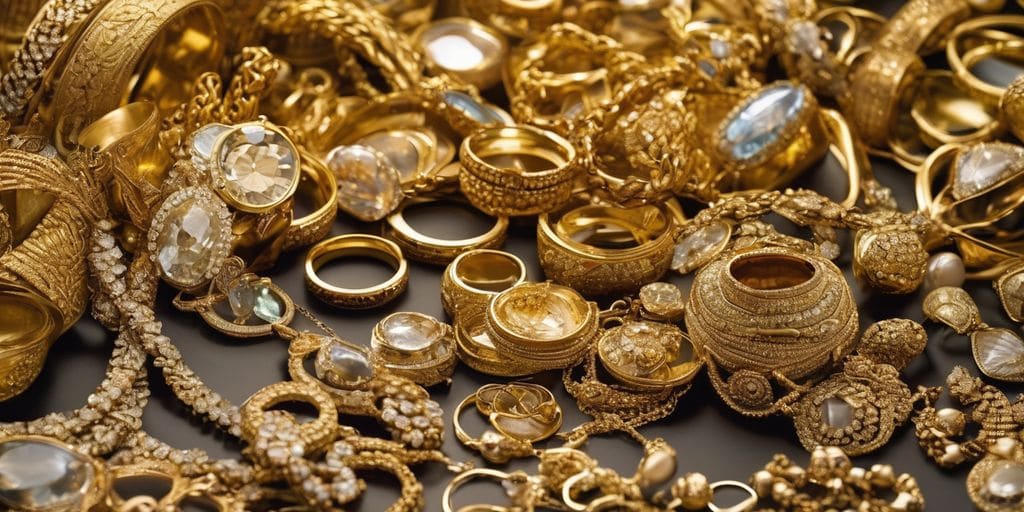
Additionally, as younger generations become more interested in both fashion and investing, gold jewelry is increasingly viewed as a dual-purpose asset. Millennials and Gen Z consumers are showing more interest in wearable gold as a way to express their personal style while investing in a tangible asset that holds long-term value.
Global Regions with the Strongest Growth
While the gold jewelry market is global, some regions are experiencing stronger growth due to cultural preferences, economic development, and consumer behavior. For example, in India, gold jewelry is not only a popular fashion item but also an essential part of cultural rituals, such as weddings and festivals. This has driven consistent demand for gold jewelry, which outpaces demand for bullion in many cases. The intricate craftsmanship and diverse designs of Indian gold jewelry make it a popular choice for collectors and investors alike.
China, too, has seen a surge in gold jewelry demand. As the country’s middle class grows, the desire for luxury goods, including gold jewelry, has risen dramatically. The Chinese government also plays a role in this by encouraging gold as a hedge against inflation, further solidifying its role in the investment space.
In the Middle East, where gold is historically seen as a store of wealth, jewelry is highly valued both for its intrinsic gold content and its aesthetic qualities. Countries like the UAE and Saudi Arabia are key players in the global gold jewelry market, with a cultural preference for purchasing gold in the form of jewelry rather than bullion.
When to Wear vs. When to Sell
One of the unique aspects of investing in gold jewelry is that it allows investors to enjoy their asset while still retaining its potential for appreciation. Unlike bullion, which is typically stored and rarely interacted with, gold jewelry can be worn and showcased while also serving as an investment. For collectors and investors who see the value of both the aesthetic and financial appeal of gold, the choice between wearing and selling becomes a personal decision.
However, when it comes to selling, it is crucial to understand the timing of the market. The resale value of gold jewelry is often higher when the piece is rare or in high demand. As with any investment, it’s important to monitor market conditions and trends before deciding to sell.
Conclusion
The gold jewelry market is outpacing bullion for several reasons, including the added value of craftsmanship, scarcity, and brand appeal. As an investment, gold jewelry offers unique advantages over bullion, including the ability to enjoy the asset while still retaining its potential for appreciation. In certain global regions, the demand for gold jewelry continues to outstrip that of bullion, driven by cultural preferences and growing wealth in emerging markets. As fashion trends evolve and younger generations embrace gold jewelry as both a luxury and an investment, it is likely that the market will continue to see strong growth.
For investors looking to diversify, gold jewelry presents a unique opportunity that combines the stability of precious metals with the creativity and value of luxury design. Understanding the interplay between gold content, craftsmanship, and market demand will be key for anyone seeking to invest in this asset class.








